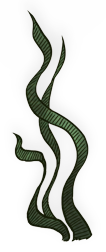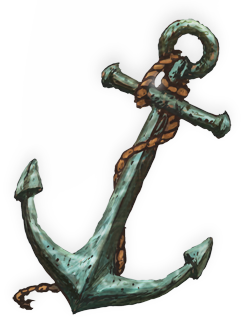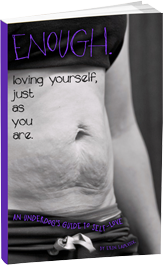Depth is not something that everyone easily sees or consciously recognizes, but we all notice when it is there.
We also notice when it is NOT.
In my spare time I take pictures. I come by the hobby honestly; my mother is Japanese (“Ooooh, taykoo peecktcha?”) and there are no less than twenty cameras at every family function no matter how many people show up. In addition, my dad has always fostered a passion for photography. Between the two of them, I grew up with a lens in my face most of the time.
I got my first SLR camera when I was 25. It was a Christmas gift from my dad. I “SQUEEE”d when I unwrapped the gift, opened the box immediately, and I never looked back. I loved that thing. It shot film, though, and after the first roll came back from the store I realized “WOW, I have a lot of learning to do.” The pictures weren’t BAD, they were just “….meh.” Uneventful, uninspiring. They were pictures of events and the SURFACE of life, but no more than that. A person could look through my photos and say “Oh yeah, I remember that, I forgot that guy was there, what was I thinking wearing that shirt?” but that’s about it. My pictures did not tell a story, they did not inspire.
When I turned 30 I bought myself, for my birthday, a DSLR. It was my very first big girl, purely selfish purchase. It was “for fun,” yes, but MOSTLY I needed a DSLR to take a photo, get immediate feedback (instead of writing down camera settings for each frame and waiting to compare notes to the developed pictures), and not waste so much money on processing film. (Really, so much wasted film. So many bad pictures. SO MUCH TO LEARN.) I pulled out my digital camera whenever I could, took pictures of family events and documented parties, meetings, work, and kids. I played and played. I really did (DO) love taking pictures.
Time passed, and at some point life got to be really busy and way too heavy. My marriage was falling apart and I was in a deep, dark hole. There was no JOY in my life, really, nothing that made me want to pull out my camera so I could later REMEMBER. My camera was more and more was left behind. It was put on the shelf, put in a box, and intentionally forgotten. I didn’t spend much time taking pictures during the years of my divorce and family turmoil; there was nothing to capture worth immortalizing.
About three years ago, once the dust of life and consequence had settled, I pulled my camera out of hiding. I took it for a spin, felt the weight of it in my hand and the scratch of the strap on the back of my neck, and I remembered. I remembered how much I loved to capture moments, how much I loved taking pictures, and once I perused my first set of photos I remembered why I got the DSLR in the first place. They were bad. I had a lot of learning to do.
I started burying myself in all the information I could find on photography. My Facebook news feed was full of photogs, either through business pages or profiles of those I had creepy-stalker-found and sent friend requests to. “I LOVE YOUR WORK, PLEASE BE MY FRIEND.” (I wasn’t really that weird in the messages, but kind of.) I subscribed to daily photography blogs, emails, newsletters. I bought books. I READ THE MANUAL for my camera. (Seriously, if you’re looking to start taking pictures, read the camera manual FIRST. After six years with the thing I learned about fifty tricks that would have saved SO MUCH TIME.) I BURIED myself in photography, bombarded myself with images, and immersed myself in those whose work I loved.
And I even spent time looking at pictures I hated.
Well, maybe not HATED. But for sure “pictures I didn’t like.” As I sifted through pages and pages and account after account on social media, filckr, and 500px, I was drawn very deeply to a lot of great stuff, but I was equally drawn to a lot of bad stuff, too. I would find an image that by all intents and purposes SHOULD be a great picture, but it just was NOT. I didn’t know enough at the time to put my finger on it, I couldn’t identify the error, but it was there. I FELT IT.
I started a collection of images sorted by “this is a great picture” and “this is a bad picture.” Like I said, at the time I couldn’t explain WHY one picture was bad and one was good, I just knew that they were different. One photo had something the other didn’t.
And I’m not talking about lighting, or composition or content, although those things are important. I’m talking about something else. Something DEEPER. (You see where I’m going with this, I bet. You’re so smart!)
A normal person sees in three-dimension, they see objects and distance and position. They generally see people as people, not in terms of juxtaposition or inference. For the most part, “micro-expressions” are lost on most. People, men especially, usually take what they see at face value and, by default or intentional ignorance, choose to not see what lies under the surface of life.
To be a great photographer you have to learn to SEE things differently. Specifically and at the most basic level, a photographer must learn to see in light, dark, and shadow. The definition of “photography” is “to capture light,” so for a photographer seeing in terms of light is like an electrician seeing in terms of amperage and wattage. “How you see” is a tool necessary to do your job.
Seeing the physical world around me in a different way was not innate for me. It was HARD. I had to learn. I had to CHANGE. Through different exercises, forum given assignments, and practice, I started to see not only in light, dark, and shadow, but texture, grain, and patterns. I started to see EVERYTHING differently. Instead of seeing life through a mottled, cracked glass door, the door that led to life was suddenly OPEN. For the first time I could see what was really there, not just the wavy, suggestive, blurred replica.
Learning to see Depth is like learning to see as a photographer.
With a Depth perspective, you learn that two bodies standing close to each other can speak volumes, good or bad, without saying a word. You’ll learn that your kids look different on the outside when they think no one is watching, and that if you look carefully and wait quietly and patiently you can see inside a person far enough to touch their heart and mind. Employees will be less like robot monkeys and more like valued commodities. Bosses will be less tyrannical and more easily managed, and you will be able to develop people regardless of their position in your life. As you grow in your own Depth you will discover that everything that once appeared shallow, all those things that looked like reflections on top of the water, carry on for miles and miles under the surface.
With enough work and perspective, you will find that EVERYTHING has Depth.
Just recently I started going through some of those old pictures I had saved, the “this is a good picture” and “this is a bad picture” collection. With my new skill set and my unfiltered vision I was able to VERY EASILY point to every less-than-great photo and explain WHY I didn’t like it. This one had light coming from two places, and they did not compliment the content. That one had too much vignette. Those are over-processed, this one is way off from the rule of thirds.
MOSTLY, though. Mostly the thing that most pictures were missing, ARE missing, and the thing that my first pictures with my first camera were missing, is Depth.
Without Depth, LIFE, just like a photograph, is “…meh.”
The beauty of this, of learning to SEE differently, is that once you figure it out you CAN’T NOT SEE IT. It’s ALWAYS there. Your perception is permanently altered, you start to see the same things you’ve seen one thousand times before as something completely new. A simple object like pencil shavings becomes an explosion of color and texture, and instead of it being a pile of garbage it is an indication of hours of work, the spark of imagination, and the bottomless potential of creativity.
To make ourselves better photographers, we must learn to see light.
To make ourselves better HUMANS, we must learn to see Depth.
Seeing Depth is like seeing light. (omg, that analogy is so beautiful and deep and perfect I might put it on a tshirt.)
To see Depth is to see Light.
Depth, like light, ILLUMINATES. It creates shadow and perspective. It gives meaning to the shapeless things otherwise in the dark, and it creates safety by making us aware of pitfalls and dangers otherwise hidden. Depth is like LIGHT, and once you learn to see it you CAN’T NOT SEE IT.
The story behind Depth and how the concept grew in my mind is a long (and kind of annoying) one, and best saved for another time. Long story short, my mental ramblings over months and months led to an epiphanous frontal lobe explosion, complete with goose bumps, crying, yelling out loud, air punches, and a phone call to The Mister. “OHMYGOODNESS I FIGURED IT OUT.” It was like all the pieces of all the things fell into place, and I SAW DEPTH. And just like SEEING LIGHT to take photos, once I saw it I couldn’t NOT SEE IT.
My goal, for you, is that you learn to see. My goal is to teach you what I’ve learned through trial and failure, and to take you (albeit in a more organized and succinct way) through my mental process that birthed this life changing concept.
Just like learning to see the light changed the way I saw photographs, learning to see Depth will change the way you see people. The person you’ve had a problem with for a long time but never understood “what” or “why,” with enough Depth you will be able to identify where your relationship falls short. The ability to see Depth will change the way you interact with your kids, employees, boss, peers, lover, group, church. No relationship you have ever had or will ever have will be the same, because YOU will not be the same. You will see things differently, and because perception determines reality your reality will change.
I so look forward to our journey together, and I cannot wait to hear how your lives have changed as you remove the mottled, crooked glass filter from your eyes.
Let’s dig deep together,
Erin












Comments ( 0 )